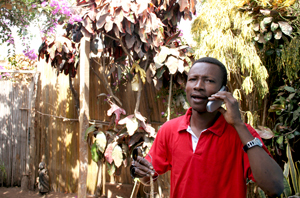 Pronunciation
Pronunciation
Tone of Voice
In English, tone of voice can be used to indicate the speaker’s feelings or attitude. For example, if we don't believe someone we might say "Go on!" (meaning “I don’t believe it’’) with a falling tone. We can use the same words with a rising tone to encourage someone; "Go on !" (“You can do it”).
The pronunciation of words in Yorùbá language is tonal; where a different pitch conveys a different word meaning or grammatical distinction.
This means that pronouncing words in Yorùbá is based on what is called Àmì ohùn – Tone Marks. These marks are applied to the top of the vowel within each syllable of a word or phrase.
There are three types of tone marks namely:
| Dò | Low with a falling tone, depicted by a grave accent |
| Re | Mid with a flat tone, depicted by an absence of any accent |
| Mí | High with a rising tone, depicted by an acute accent |
Understanding the use of tone marks is key to properly reading, writing and speaking the Yorùbá language. This is because some words have similar spellings but at the addition of tone marks, these words could have very different meanings.
Here are some paired examples:
| Apá | (Re Mí) | Arm |
| Àpá | (Dò Mí) | Scar |
| Bàtà | (Dò Dò) | Shoe |
| Bàtá | (Dò Mí) | A type of Drum |
| Aya | (Re Re) | Wife |
| Àyà | (Dò Dò) | Chest |